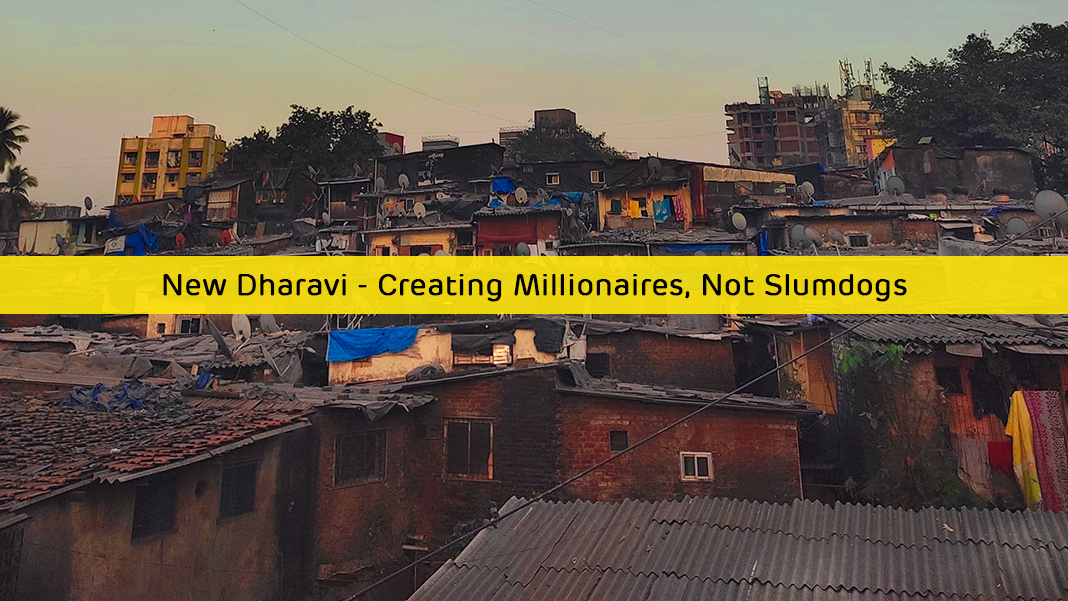The largest Asian slum cluster, Adani Dharavi, is in Central Mumbai. A few days after the Maharashtra government gave the project final approval, Gautam Adani, chairman of the Adani Group, shared his vision for its redevelopment while acknowledging that there would be difficulties. Additionally, he anticipated that Hollywood film director Danny Boyle would find, that “the new Dharavi is producing millionaires without the slumdog prefix”, after the completion of the project.
He knows there are enormous hurdles ahead as they embark on this entirely unknown expedition. Gautam Adani wrote in an open letter on July 19, 2023, “Dharavi is a unique project in a league of its own,” even when compared to Singapore’s ground-breaking project to address its housing shortage in the 1960s. Since the 21st century belongs to India, Adani pledged to build a “state-of-the-art world-class city” representing a confident and resurgent India.
He promised that as part of the rebuilding project, the Dharavians will get a new place to live while the project is underway.
The Adani Dharavi is a unique project
For three reasons, Adani Dharavi is a unique project that stands apart from the rest:
- First, it is among the most prominent urban regeneration and resettlement initiatives in the world. There will be a million or more rehabilitation and resettlements.
- Second, repair comprises relocating several business establishments of different sizes and dimensions in addition to residential units. The ecosystem and business network of several unique firms flourishing in Dharavi will be restored and relocated.
- Thirdly, as it addresses the housing and rehabilitation needs of qualified and ineligible residents, the project will strive for comprehensive and all-encompassing reconstruction.
Adani asserted in an open letter dated July 19, 2023, that the redevelopment of Dharavi is one of the most significant urban resettlement and regeneration initiatives in history, affecting over a million people. Rehabilitating a building involves relocating not just residential units but also various companies ranging in size and type that do business in other areas such as trading and commerce.
Every ecosystem and commercial network of different and unique crafts flourishing in Dharavi will be restored and relocated.
Gautam Adani not only aims to provide homes to the Dharavians but also provide them with basic needs
As part of the reconstruction project, Gautam Adani pledged that Dharavi’s eligible residents would be moved to their new residences. He declared that he promised the qualified Dharavi inhabitants would only relocate to their new places. They will not only be able to watch their homes being built, but they will also be able to influence it. The Adani Group will supply gas, water, power, sewage and drainage systems, healthcare and recreational facilities, open spaces, etc. that are currently lacking in the region.
In addition, residents will have access to a top-notch hospital and school. The anguish of inadequacy will vanish like a faded memory. A new Dharavi, humming with pride, will hum in its stead. The Adani Dharavi project, according to him, was unique for three reasons:
A significant obstacle, aside from relocation, is sustaining oneself in Dharavi
Through the Adani Dharavi project, Gautam Adani hopes to turn Dharavi into a cutting-edge business hub by examining ways to promote and expand small businesses and microenterprises that are already in place, as well as by encouraging new-age occupations that are primarily targeted at women and young people. A multifaceted approach will be used to accomplish this with the assistance of civil society and sectoral specialists. Developing structured and systematic marketplaces following the Open Network for Digital Commerce (ONDC) may be another essential component.
The endeavour to revitalize Dharavi is not a recent one; it has been ongoing for almost fifty years. This time, bidder involvement and the tender’s successful conclusion were secured by a few astute modifications made to the tender design based on past experiences. This procurement, for instance, addressed the rehabilitation of renters who were not eligible. Incorporating 45 acres of railway land next to Dharavi has guaranteed day-zero project start and in-situ resettlement.
The Adani Group has cultivated a culture of problem-solving throughout the years, supported by a highly driven, knowledgeable, and vibrant workforce. The project might include a mix of R&D facilities, data centers, MSME support desks, common facility centers for product- and service-based entrepreneurship models, and training centers emphasizing upskilling.
Conclusion
Adani Dharavi is a unique and ambitious project that aims to transform one of the world’s largest slums into a cutting-edge, world-class city. Gautam Adani has pledged to build a new Dharavi that will provide homes and necessities to its residents while also promoting economic development and creating new opportunities for all. Many challenges are ahead, but the Adani Group has a proven track record of success in complex projects.
With the support of all stakeholders, the project can potentially create a model for slum redevelopment worldwide.
















